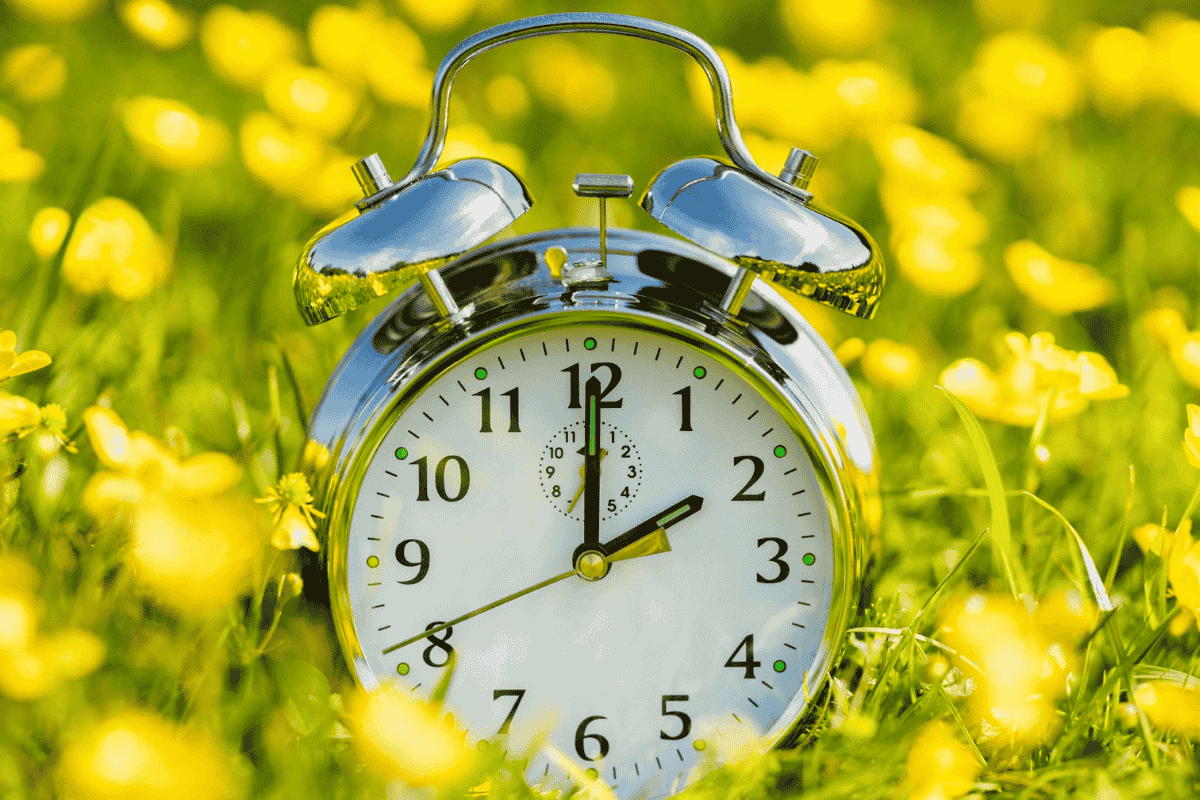Timing
Daylight Saving Time (DST) in the United States ends on Sunday, November 2, 2025, at 2:00 a.m. Clocks “fall back” one hour, returning to Standard Time.
Most digital devices like smartphones, computers, and smartwatches will automatically update, but older clocks, ovens, and microwaves may require manual resetting. To avoid confusion, many people set their clocks back before going to bed on Saturday night.
While it may feel like you’re gaining an hour of sleep, your internal clock doesn’t always adjust immediately. The shift can subtly disrupt your body’s rhythm, affecting sleep and mood.
Effects
The brighter mornings that follow the time change come at a cost—darker evenings. This can alter your energy levels and even your emotional balance. Common effects include:
- Increased fatigue or sluggishness
- Mild irritability or mood swings
- Difficulty falling asleep or staying asleep
- Worsening symptoms of Seasonal Affective Disorder (SAD) in some regions
Although “falling back” is generally easier on the body than “springing forward,” even minor disruptions can impact alertness and productivity for several days.
Sleep
Adjusting gradually can make a big difference in how smoothly your body transitions. Sleep experts recommend small, proactive steps:
- Go to bed 15–20 minutes earlier for a few nights before the time change
- Maintain a consistent wake-up time, even on weekends
- Get morning sunlight to help regulate your circadian rhythm
- Limit screen time before bed
- Avoid caffeine and heavy meals late in the evening
- Take short naps (under 20 minutes) if needed during the day
Your body thrives on regularity—consistent routines and light exposure help keep your internal clock aligned.
Safety
The time shift doesn’t just affect sleep—it can influence safety, too. With the sun setting earlier, visibility decreases, leading to a rise in pedestrian and traffic accidents during the week after the change.
To stay safe:
- Wear reflective clothing when walking or cycling at night
- Try to complete errands before dusk
- Be extra cautious for pedestrians and children during darker commutes
Fire departments also recommend using the time change as a reminder to:
- Test smoke alarms and replace batteries in smoke and carbon monoxide detectors
A few minutes spent checking can prevent major hazards later.
Exceptions
Not every U.S. region observes Daylight Saving Time.
- Arizona (except the Navajo Nation) and Hawaii stay on Standard Time year-round.
- U.S. territories such as Puerto Rico, Guam, and the U.S. Virgin Islands do not participate.
While the Sunshine Protection Act (passed by the Senate in 2022) proposed making DST permanent, it has not become law. Supporters argue for improved health and reduced energy use, while opponents warn about darker winter mornings affecting sleep and safety.
Tips
Here’s how to make the most of the extra hour and adjust smoothly:
| Task | Why It Helps |
|---|---|
| Set clocks back 1 hour | Prevents confusion on Sunday morning |
| Check smoke and CO detector batteries | Ensures home safety |
| Adjust bedtime slightly earlier | Helps your body adapt naturally |
| Open curtains in the morning | Boosts alertness with natural light |
| Avoid screens before bed | Improves sleep quality and melatonin levels |
The end of Daylight Saving Time might seem like a small event, but it can affect your sleep, mood, and safety more than you realize. By preparing ahead and maintaining consistent habits, you can enjoy the extra hour of rest—and start the darker months feeling balanced and refreshed.
FAQs
When does Daylight Saving Time end in 2025?
Daylight Saving Time ends on Sunday, November 2, 2025, at 2:00 a.m. when clocks fall back one hour to Standard Time.
Why do we turn the clocks back?
The purpose is to make better use of daylight during the summer months and then return to Standard Time in winter for brighter mornings.
How can I adjust my sleep schedule for the time change?
Go to bed 15–20 minutes earlier for a few nights before the change, keep a consistent wake-up time, and get sunlight exposure in the morning.
Do all U.S. states observe Daylight Saving Time?
No. Arizona (except the Navajo Nation) and Hawaii stay on Standard Time year-round, as do territories like Puerto Rico, Guam, and the U.S. Virgin Islands.
What safety tips should I follow after the clocks change?
Be cautious of darker evenings, wear reflective clothing when walking or biking, and use the time change as a reminder to check smoke detector batteries.






